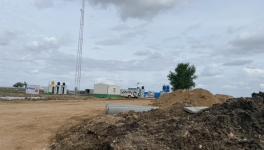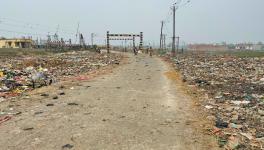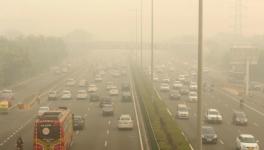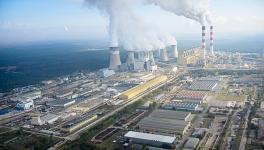West Bengal Coal-Based Power Plants Don’t Comply With 2015 SO2 Emission Norms
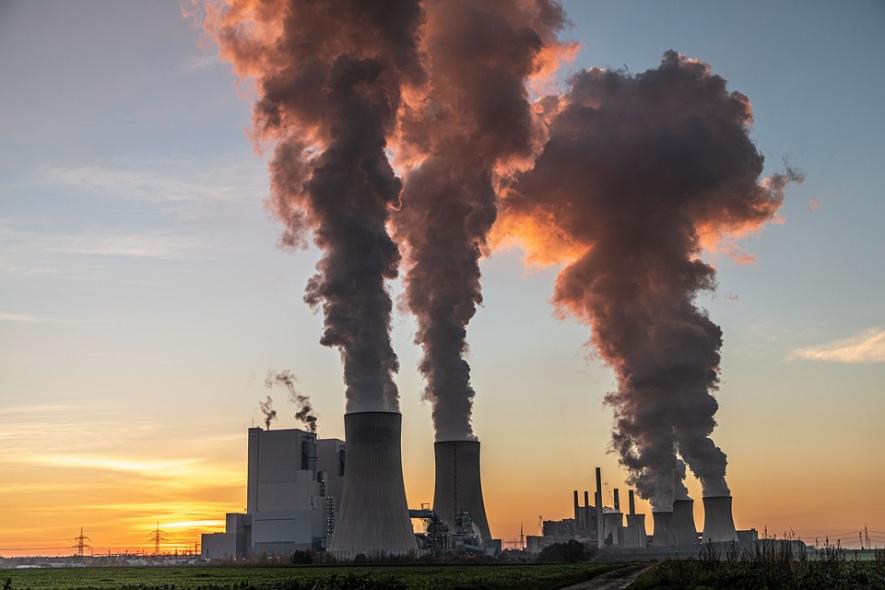
Coal-fired Power Station Power Plant. Image Courtesy: MaxPixel
Kolkata: It has been seven years since the Centre’s December 2015 notification making it mandatory for a majority of coal-based power plants to comply with emission norms was issued but not a single power station in West Bengal (WB) has installed the technology to reduce the generation of sulphur dioxide (SO2), nitrogen oxides (NOx) and mercury (Hg).
In fact, around 78% of coal-based plants across the country are not liable to meet emission norms before 2024, according to a December 2021 report submitted by a task force constituted by the Central Pollution Control Board (CPCB) in April last year.
The power plants got the relaxation after the ministry of environment, forest and climate change extended the timeline for a majority of such plants by amending the notification for the third time in April 2021.
Neither WB’s power plants have tightened the emission of particulate matter and set a limit on water consumption, as required by the 2015 notification.
The state’s population “faces severe health risks” due to its reliance on dirty coal energy. More than 40% of coal-based power plants have not yet awarded bids for Flue Gas Desulphurisation (FGD) plants, according to the latest assessment titled ‘Emission Watch—Status assessment of SO₂ emissions and FGD Installation for coal-based power plants in West Bengal’ done by the Centre for Research on Energy and Clean Air (CREA).
The concentration of particulate matter becomes abnormally high in the vicinity of power plants and affects the health standards of the population of that area.
What makes the situation grim is that none of the other units comprising the remaining 60% capacity have completely installed the pollution-reducing technology before the deadline.
Air pollution from coal-fired power plants not only impacts people in its immediate vicinity but travels long distances, and the concentration levels puts everyone at risk, especially vulnerable citizens such as children, the elderly, and pregnant women.
A recent study titled ‘A deep insight into state-level aerosol pollution in India: Long-term (2005–2019) characteristics, source apportionment, and future projection (2023)’,
carried out by the famed Bose Institute, forecasted that aerosol pollution in WB will rise by 8% in 2023 and the state is expected to remain in the highly vulnerable red zone in the said time period.
The state’s aerosol population is the second highest after Bihar with factors like staple burning and construction dust contributing to it.
High aerosol amounts include particulate matter (PM2.5) and PM10, among other pollutants, along with sea salt, dust, black and organic carbon. Aerosol Optimal Depth (AOD) is the quantitative estimate of the aerosol present in the atmosphere and it can be used in the proxy measurement of PM2.5.
The study, conducted by Dr Abhijit Chatterjee and PhD scholar Monami Dutta, provides a national scenario for aerosol pollution with long-term trends (2005-2019), source appointments and future scenarios (2023) for various states.
WB is in the red category, the highly vulnerable zone with an AOD of more than 0.5. An 8% rise in aerosol pollution will push the AOD to more than 0.75 within the red zone in 2023.
“Due to its strategic location, West Bengal receives Indo-Gangetic Plain air pollution outflow and its local emissions have put the state in the highly vulnerable zone,” Chatterjee, the study’s principal author and associate professor of environmental sciences at the Bose Institute, told Newsclick.
“West Bengal is already in the highly vulnerable zone. A nominal increase (8%) can have a disastrous impact on the health and life of the population,” Chatterjee added.
Details of CREA analysis
Out of the total coal-based electricity generation capacity of 13,686 MW in the state, none of the major units connected to the grid have installed FGD (emission control technology to remove SO2) or Direct Sorbent Injection (DSI) technology to control SO2 emissions.
Only around 54% of WB’s electricity generation capacity (7,480 MW) capacity has been awarded bids for FGD installation and 510 MW has been identified as the capacity to be retired over the next few years, which would be exempted from SO2 control technology installation. The assessment finds that more than 40% of the capacity (5,695 MW) is not taking any serious steps to regulate SO2 emissions.
Limiting SO2 emissions at source will significantly reduce the total air pollution. When coal and other fossil fuels with an inherent sulphur (S) component are burned, a reactive gas called SO2 is released. A significant portion of the overall PM concentration in ambient air is made up of secondary particles, which are created when SO2 combines with other contaminants.
The dangerous PM2.5 causes millions of fatalities annually both in India and globally. Controlling SO2 emissions from coal-based power plants at the source will significantly reduce the overall amount of air pollution in the state and beyond. The CREA report finds that SO2 emissions from power plants can be reduced by up to 86% at some units, which shows the urgency and seriousness of installing SO2 emission control devices at these power generation stations.
Various environment pollution control contracts for FGD installation and other government documents mention an 18-36 month timeline for FGD installation, which indicates that the Central sector power plant units at Mejia unit 7 and 8, Durgapur steel TPS unit 1 and 2 and Raghunathpur unit 1 and 2, which awarded bids in July 2019, have surpassed the deadline. The process for retrofication is delayed/halted resulting in continued suffering for the public due to higher pollution emissions, according to the assessment.
Units 1-6 at Mejia, which awarded bids before February 2021, should have also FGD running by December 2024 or earlier. But there is a lack of transparency about the process and progress, which could cause further delay, especially now that the timeline for the units has been pushed to December 2026.
In May 2020, NTPC’s Farakka Super Thermal Power Station awarded the contract for installing FGD. Private sector power generation units are the worst in retrofitting SO2 emission-control technology with none of them awarding bids, CREA.
The state government’s lack of commitment to reducing emissions is evident in the fact that 3,070 MW of the 3,970 MW capacity under the public sector have not been awarded bids for FGD installation.
“While there is a lack of seriousness about controlling pollution at source from electricity generation stations in West Bengal by the state, Centre and private entities, coal consumption is increasing for grid-connected power generation units, indicating increasing emission load and contribution to air pollution from the power sector,” CREA analyst Sunil Dahiya, who authored the report, told Newsclick.
“The coal consumption for grid-connected power generation in West Bengal has increased from 44 MT in 2015 to 54 MT in 2021,” Dahiya added.
The government “legitimising the non-compliance by coal-based power plants through extensions and dilution doesn’t take away the fact that these power plants are a big source of pollution and have an adverse impact on health,” he said.
Current emissions from operational units are in the range of 800-1,100 mg/Nm3, which can be reduced up to 86% for different units based on their unit size and commissioning year, the assessment states.
The report also highlights a lack of transparency on sharing pollutant emission data in public as Online Continuous Emission Monitoring Station data is not shared by the West Bengal Pollution Control Board (WBPCB), CPCB or power companies.
“In the absence of transparent data sharing, it is hard to enforce regulation and ensure its operation. Therefore, while there is an urgent need to install SO2 control technology, we must ensure transparent and reliable real-time data sharing for emissions monitoring from these polluting power stations,” Dahiya said.
The report further mentions that “the state has nearly 10% buffer for peak capacity requirement and out of total capacity (11,131 MW) allocated to West Bengal in total energy terms, it only required 55,881 MWs in 2021-22, which translates to suboptimal 57% power load factor utilisation of the generation capacity”.
Get the latest reports & analysis with people's perspective on Protests, movements & deep analytical videos, discussions of the current affairs in your Telegram app. Subscribe to NewsClick's Telegram channel & get Real-Time updates on stories, as they get published on our website.













